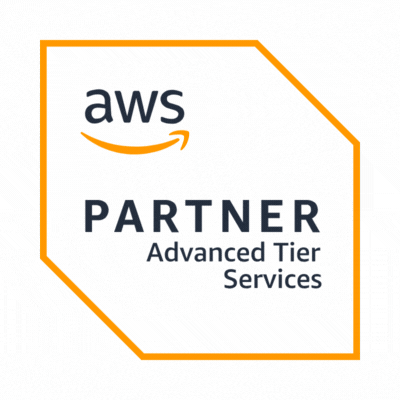As healthcare organizations increasingly turn to digital innovations, the regulatory landscape grows ever more complex. From ensuring compliance with data protection regulations to meeting industry-specific standards, healthcare innovators must navigate a maze of rules designed to protect sensitive patient information. Failing to adhere to these standards can lead to legal repercussions, heavy fines, and—most critically—compromised patient safety.
But understanding and integrating these regulations into the innovation process is key to driving sustainable, secure advancements in healthcare.
Key regulatory frameworks shaping healthcare innovation
Healthcare compliance encompasses various regulations, each tailored to ensure data security and privacy, especially as new technologies emerge. Some of the most critical regulations include:

1. HIPAA (Health Insurance Portability and Accountability Act)
One of the foundational regulations in the U.S., HIPAA governs how healthcare organizations handle and protect patients' health information. HIPAA's Security and Privacy Rules outline the safeguards required to protect the confidentiality, integrity, and availability of electronic protected health information (ePHI). For healthcare innovators, compliance with HIPAA means that:
- Data encryption is mandatory, both during storage and transmission, to protect sensitive information.
- Access control measures must be put in place to ensure that only authorized personnel can view patient data.
- Audit trails must be maintained to track access to ePHI.
For example, AI-powered healthcare applications processing patient data must incorporate these principles at every level of development to ensure compliance from the outset. Learn more about AI and data challenges in healthcare to understand how these innovations pose risk and can be aligned with HIPAA.
2. GDPR (General Data Protection Regulation)
GDPR is one of the most comprehensive data protection regulations globally, introduced by the European Union. While not specific to healthcare, GDPR has far-reaching implications for organizations that collect, process, or store the personal data of EU citizens—including health data. Its key principles include:
- Data minimization: Collect only the minimum amount of personal data necessary for a specific purpose.
- Purpose limitation: Personal data must be processed for specified, legitimate purposes, and cannot be repurposed without the user’s explicit consent.
- Right to erasure: Individuals have the right to request that their personal data be deleted from systems if it is no longer required for processing.
For healthcare organizations leveraging data analytics or AI for patient insights, GDPR compliance becomes critical in safeguarding sensitive patient data.
3. Data Protection Act (UK)
The Data Protection Act (DPA), which complements GDPR in the UK, enforces similar data protection measures but also outlines additional national standards. This act focuses on balancing technological innovation with individual data rights and is a key regulation for healthcare organizations handling sensitive patient data within the UK.
Innovators working with unstructured healthcare data, such as medical notes or diagnostic reports, must ensure that their data processing systems comply with DPA guidelines. Learn more about data modernization and how modern cloud infrastructures enable compliance with such regulations.
4. ISO 27001
For healthcare organizations, ISO 27001 offers a structured approach to managing information security risks. While not a legal requirement like HIPAA or GDPR, ISO 27001 provides a globally recognized standard for building a strong Information Security Management System (ISMS). Achieving ISO 27001 certification signifies that the organization has implemented best practices for data security and is serious about protecting sensitive healthcare information.
5. HITECH Act (Health Information Technology for Economic and Clinical Health)
The HITECH Act encourages the adoption of Electronic Health Records (EHRs) and supports the implementation of health IT systems that meet HIPAA’s stringent requirements. It also mandates breach notification requirements, ensuring that any data breaches affecting more than 500 individuals must be reported to the U.S. Department of Health and Human Services (HHS) and the affected individuals.
As healthcare providers increasingly adopt cloud-based EHR systems like AWS HealthLake, compliance with the HITECH Act ensures that these systems meet the necessary safeguards to protect patient data and privacy.
Best practices for integrating regulatory compliance in healthcare innovation
Innovation and compliance are not mutually exclusive. By implementing certain best practices, healthcare organizations can accelerate their digital transformation while adhering to regulatory frameworks.

1. Compliance-by-design
To avoid regulatory pitfalls, healthcare innovators should adopt a compliance-by-design approach. This means embedding compliance measures at the earliest stages of the innovation process. By doing so, organizations can ensure that regulatory requirements are met before systems go live, rather than scrambling to retroactively fix compliance issues. For example, developers working on AI systems for diagnostic tools should ensure their algorithms are designed to meet HIPAA’s encryption and access control standards from the beginning.
2. Data classification and minimization
A critical part of remaining compliant with regulations like GDPR and HIPAA is the proper classification of data. By understanding which data is sensitive and subject to regulatory control, healthcare organizations can focus their efforts on protecting the most vulnerable information. In parallel, data minimization principles can reduce risk by ensuring only the minimum amount of data necessary for specific tasks is collected and processed.
3. Third-party risk management
As healthcare organizations increasingly rely on third-party vendors and cloud service providers to innovate, they must ensure that these partners are also compliant with regulatory standards. For example, when working with cloud service providers like AWS, healthcare organizations must ensure that the provider complies with data security compliance standards like ISO 27001 and offers the necessary safeguards to protect health data.
4. Continuous compliance monitoring
Regulatory compliance in healthcare isn’t a one-time event—it requires ongoing vigilance. Healthcare providers and innovators should implement tools and frameworks that allow for continuous compliance monitoring, flagging potential violations in real-time before they escalate into costly legal issues.
5. Incident response and breach notification
Regulations such as HIPAA and GDPR mandate that healthcare organizations have robust incident response plans. In the event of a data breach, swift action is required not only to mitigate damage but also to fulfill breach notification obligations. A well-defined incident response plan ensures that healthcare organizations can respond effectively, limiting both financial and reputational damage.
Regulatory compliance as a strategic enabler
For healthcare organizations, regulatory compliance isn’t just a requirement—it’s a strategic enabler of innovation. By aligning their technological advancements with the regulatory landscape, organizations can enhance their ability to deliver secure, scalable, and transformative healthcare solutions. The key is not to view compliance as a hurdle, but as an integral part of the innovation process that ensures both legal adherence and patient trust.
As healthcare continues to evolve, partnering with trusted digital transformation experts—who understand both the innovation and compliance landscapes—can provide a critical advantage.
Explore how Applify helps healthcare organizations integrate innovative technologies like AI and cloud modernization while maintaining regulatory compliance with a free cloud consultation.




















